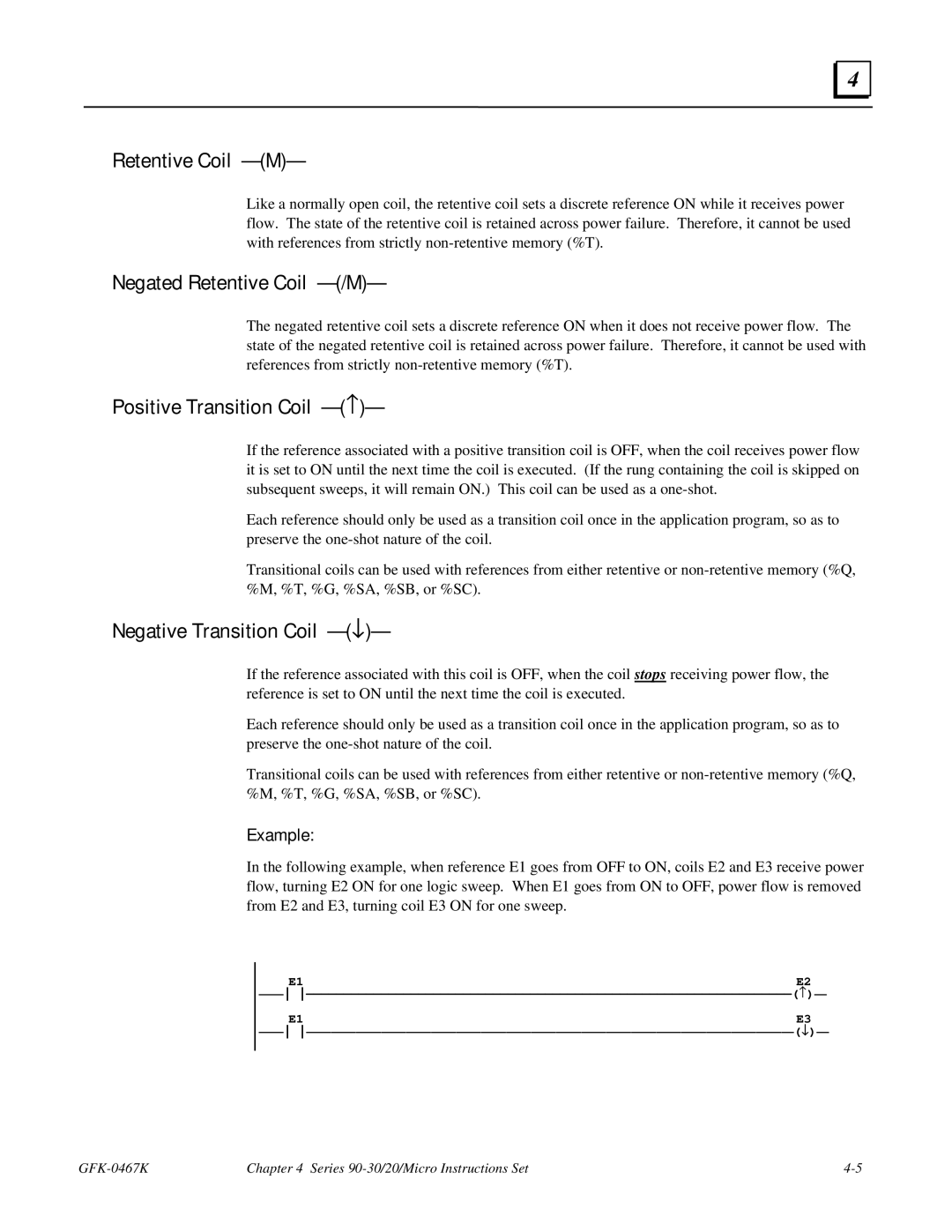4 |
Retentive Coil —(M)—
Like a normally open coil, the retentive coil sets a discrete reference ON while it receives power flow. The state of the retentive coil is retained across power failure. Therefore, it cannot be used with references from strictly
Negated Retentive Coil —(/M)—
The negated retentive coil sets a discrete reference ON when it does not receive power flow. The state of the negated retentive coil is retained across power failure. Therefore, it cannot be used with references from strictly
Positive Transition Coil —(−)—
If the reference associated with a positive transition coil is OFF, when the coil receives power flow it is set to ON until the next time the coil is executed. (If the rung containing the coil is skipped on subsequent sweeps, it will remain ON.) This coil can be used as a
Each reference should only be used as a transition coil once in the application program, so as to preserve the
Transitional coils can be used with references from either retentive or
Negative Transition Coil —(↓)—
If the reference associated with this coil is OFF, when the coil stops receiving power flow, the reference is set to ON until the next time the coil is executed.
Each reference should only be used as a transition coil once in the application program, so as to preserve the
Transitional coils can be used with references from either retentive or
Example:
In the following example, when reference E1 goes from OFF to ON, coils E2 and E3 receive power flow, turning E2 ON for one logic sweep. When E1 goes from ON to OFF, power flow is removed from E2 and E3, turning coil E3 ON for one sweep.
|
| |
E1 | E2 |
|
| |
E1 | E3 |
Chapter 4 Series |
